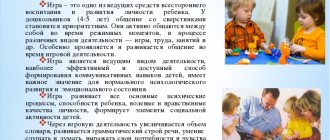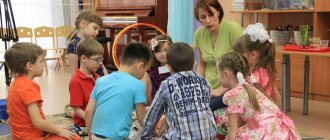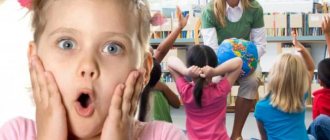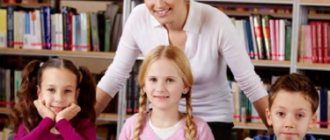Features and main problems of professional communication
Communication is one of the common categories described in philosophical, sociological, psychological and pedagogical literature. Since each of these sciences examines the phenomenon of communication from different positions, the meanings attached to the concept of “communication” may be different.
Even in modern psychology there are different views on the nature of the communication process. A number of scientists/psychologists (K. Osgurd and others) consider communication as an interindividual process that comes down to the exchange of information, the transfer of something to someone (for example, knowledge, social experience, etc.). In principle, communication here refers to the process of transmitting and receiving information.
According to another approach (M. Argyle, T. Shibutani, etc.), communication comes down to understanding, exchange of information and interaction, i.e. interactions. In the light of many domestic studies, it can be argued that only the categories “communication” and “interaction” are not fully suitable for the concept of “communication”.
The process of communication accompanies our entire lives; in everyday situations, a person actively enters into communication on one issue or another. However, communication situations can be divided into informational and goal-oriented. In the first, in accordance with the name, the main motive of communication is the exchange of information. This type of interaction includes, for example, situations such as conversations at a party, among friends or relatives, that is, such cases when a person can enjoy communication.
Unlike the first option, targeted communication is usually aimed at achieving a result, solving a problem. Most often, purposeful communication is associated with the performance of professional activities. Thus, we can conclude that professional communication is always goal-oriented. Goals, in turn, are determined by the nature and situations of professional activity. It is the achievement or failure to achieve goals that evaluates the degree of professionalism of the employee, his effectiveness, and the quality of performance of his official duties.
Based on this, professional communication is understood as the process of establishing and maintaining direct or indirect contact, determined by professionally significant goals that imply responsibility for their implementation, between an employee and a person involved in his professional interests.
In turn, direct contact implies direct communication between its participants (usually verbal communication).
And indirect interaction is called indirect contact (this is communication through writing, the use of means of communication, etc.).
In professional communication we can also distinguish between interpersonal and mass contacts. Interpersonal communication is more common because it involves direct contact between two or more people. Mass communication is a series of direct contacts between unknown and unknown representatives of a certain field of professional activity.
Professional communication is multifunctional in its content and purpose. In psychological terms, the following characteristics of professional communication are distinguished:
communicative: the goal is the exchange of information between its carriers;
interactive: the goal is interaction between participants in professional contact;
perceptual: we are talking about the perception of professional information.
Professional communication is possible between people who have a common level of knowledge. In the process of professional communication, a specialist acquires highly specialized knowledge, assimilates the norms and values that have developed in the profession, and adopts the experience of others.
Forms of communication between children and adults
Communication between a child and an adult is vital for his development at any age. This process is most important in early childhood, before school, when his personality, character, and psyche are formed. Such communication can take different forms depending on the age of the baby. And the teacher needs to correlate the child’s age and his characteristic form of communication in order for this process to proceed effectively.
Situational-personal communication
Communication is not a need inherent in a baby at birth. At the very beginning of his life, he does not perceive the adults around him. But the parents, for their part, continue to talk to him, try to catch his brief glance, and attract special attention in every possible way.
“Ebru” drawing technique for children for home and kindergarten
For your information! It is thanks to these actions of the parents that the baby, by the beginning of the second month of life, begins to realize the presence of an adult, and then respond to his actions.
An example is taken from an adult
Situational business form of communication between children and adults
First, communication is expressed in the form of the baby’s response to parental attention (communication begins): they talk to him, smile, look at him, in response the baby also smiles, moves his arms and legs.
Gradually, noticing a familiar person, the child begins to actively move, smile, walk, trying to attract attention. If he is deprived of attention, he begins to cry and scream. Once the need to communicate has arisen, it remains with the person until the end of his life.
Additional Information! Some parents carry out their parental responsibilities dryly, without unnecessary emotions, for fear of spoiling their child. Such upbringing is extremely harmful for an infant, since friendly, positive contacts between children and adults lay the foundations of the child’s personality, such as curiosity about the world around him, its perception, and self-confidence. If they are deprived of such communication, then children will grow up inactive, repressed or cruel and aggressive. You should not be afraid to spoil your baby; at this age there is no such thing as too much attention.
Extra-situational-cognitive form
According to psychology, this form of communication in a preschooler manifests itself in the period from 3 to 5 years. At this age, children have more opportunities. They become interested not only in the things themselves, but can also imagine their properties and functions, and determine their characteristics. Their speech is already developed enough to not only listen to explanations, but also actively participate in the conversation and ask questions.
Important! On the part of adults during this period, their reaction to the actions of children becomes important. Approval encourages the child to further understand the world, while criticism, on the contrary, becomes a barrier in communication, forcing the child to hide and move away from the adult.
Extra-situational-personal form
This is the final stage in the evolution of forms of communication between preschoolers and adults. The main difference between this form of communication and the previous stage is that it aims at the social aspect of relationships between people, and not the material nature of things. This function is called “pure” communication.
Children of senior preschool age already exhibit personal motives that encourage children to communicate. They can manifest themselves in the process of various activities: work, play, education, sports. But now it has its own meaning.
For preschoolers, communication of this kind is important, since through it they learn the essence of the social structure of people’s society, the motives of their actions in relation to certain circumstances. An adult serves as a source of information about social phenomena in society.
For your information! A child chooses an adult as his role model, because he has not had such experience before - every situation is new for him, and he needs a standard, a means of achieving a goal, which he will look up to and build upon in later life, when the adult is not around. Therefore, for the further successful development of the baby, it is important what examples of behavior he will encounter for the first time.
Educational games for development for 7-year-old children
Professional pedagogical communication
In the psychological and pedagogical literature there are different interpretations of educational communication. Here are some of them. For example, A.N. Leontiev defines pedagogical communication as “professional communication between a teacher and students in the classroom and outside it (in the process of teaching and education), which has certain pedagogical functions and is aimed (if it is complete and optimal) at creating a favorable psychological climate, as well as other types of psychological optimization pedagogical activity and relations between teacher and student in the student body." I.A. Zimnyaya notes that pedagogical communication “as a form of pedagogical cooperation is a condition for optimizing the learning and personal development of students themselves.”
A.A. Rean understands pedagogical communication as “professional communication between a teacher and a student in the communicative and educational process, which has certain functions and is aimed at creating a favorable psychological climate, as well as another way of psychologically optimizing educational activities and the relationship between teacher and student.” S.S. Stepanov writes that “pedagogical communication is a specific interpersonal interaction between teacher and student, mediating the acquisition of knowledge and the formation of personality in the educational process.” According to K.K. Platonov, pedagogical communication can be described as “the interaction of subjects in which there is an exchange of rational information, activities, experience, knowledge, abilities, skills, and results of activities.”
Often in psychology, pedagogical communication is defined as the interaction of subjects of the pedagogical process, carried out with the help of signs and aimed at significant changes in the characteristics, states, behavior, personal and semantic formations of partners. Communication is an integral element of pedagogical activity; without it it is impossible to achieve the goals of training and education.
The peculiarity of a teacher’s work lies, first of all, in the fact that its object and product is a person, his inner world. The peculiarity of the work is expressed in constant communication with children who have a different worldview than an adult. Pedagogical activity is a constant interaction between a person who has mastered cultural and historical experience and a person who masters it. In pedagogical activity there is a specific subject of labor - a person with the uniqueness of his individual characteristics.
The productivity of pedagogical communication directly depends on the goals and values of communication, which are accepted by all subjects of the pedagogical process.
For example, the following functions of pedagogical communication can be distinguished:
Information. It consists both in the transfer of social and professional experience (knowledge, skills, abilities) from the teacher to the students, and in the exchange of personal meanings associated with the objects of learning and life in general. As R. Cialdini wrote, in communication the formation (i.e., the emergence of new characteristics and qualities) of individuality of both students and teachers occurs.
Contact. In the process of pedagogical communication, contact is established between the participants in the process as a certain state of mutual readiness to receive and send information.
Stimulation. Pedagogical communication is aimed at stimulating the activity of students and creating conditions that encourage them to carry out certain educational activities.
The emotional component of pedagogical communication contributes to the formation of the necessary emotional experience (“exchange of emotions”) for both the student and the teacher. By inducing certain emotional states in the student, the teacher, with his help, changes his own experience, etc.
Conditions for speech development
The following conditions contribute to the development of speech in a young child:
- constant friendly communication with the child, and as a result - his confidence in the adult and the desire to talk with him.
- satisfying the child’s need to communicate with peers and children of different ages.
- the linguistic culture of all adults surrounding the child! Remember that children at this age immediately understand everything you say and do.
- provide children with sufficient educational materials; books, pictures, toys, etc. Remember: the main thing is not the beauty of the decoration (although this is important), but the content of what is written, drawn, done.
- conduct special games and exercises for language development.
A necessary condition for the comprehensive development of a child is his communication with adults. The problem of communication between a child and adults is the subject of research by many psychologists: L.A. Bozhovich, L.S. Vygotsky, Ya.L. Kolomensky, T.A. Markova, L.A. Penevskaya, R.I. Zhukovskaya et al.
Adults are the custodians of the experience, knowledge, skills, and culture accumulated by humanity. This experience can only be conveyed through language. Language is “the primary means of human communication.” Young children who learn their native language master the most important form of linguistic communication—oral speech. Linguistic communication in its full form is gradually developing - understanding speech and active speech. Speaking is a very complex mental activity, which is divided into several types and forms. Speech is a special human function that can be defined as the process of communication through language. The language that is formed in children during their development goes through several stages of development and becomes a used system of means of communication and mediation of various mental processes.
The educational value of communication lies not only in the fact that it expands a person’s general worldview and contributes to the development of mental formations necessary for him to successfully carry out professional activities. The educational value of communication also lies in the fact that it is a prerequisite for the formation of a person’s general intelligence and, above all, many of his perceptual, mnemonic and mental qualities.
The child’s relationship with the adult world, which continues throughout the entire teenage stage due to the complexity and various dependencies of the mental sphere, can act as a factor in the child’s real full adaptation in his relationships with the outside world, increase his activity, independence in interpersonal contacts with other people, and can also be a source of psychological trauma to the individual, reduce his activity in subject-subject relations.
In the process of teaching and social education of a child, regardless of one or another didactic or personal development goal, there is always a system of mutual influence between an adult and a child, based on a certain level of mutual perception and relationship building, where the style of pedagogical communication plays an important role.
The individual specificity of the teacher and his uniqueness determine the stylistic features of the activity associated with specific methods of its implementation. Each teacher strives to make the most of his individual qualities that ensure success in his activities, and to overcome those qualities that hinder this success.
Specifics of pedagogical communication in a preschool educational institution
Interaction skills in communication style
The personality of an adult - parent, teacher, teacher in a preschool institution during the period of formation of the child’s personality is the main factor in his development.
The problem of pedagogical skill and communicative competence of teachers of preschool educational institutions is quite acute in connection with the diversity and complexity of the tasks of forming a child’s personality, determined by modern society and new standards of theory and practice of preschool education.
Pedagogical communication is one of the main components of pedagogical skill. Pedagogical communication is the professional communication of a teacher-educator with preschoolers in and outside the classroom, aimed at creating a favorable psychological climate, as well as another way of psychological optimization of educational activities, relationships between the teacher and the student and within the child’s group [16, p. 114].
In pedagogical communication in a preschool educational institution, the following features can be distinguished:
Firstly, this is professional communication between the teacher and the child in specially organized classes and outside them, as well as with teachers in the teaching staff.
Secondly, pedagogical communication in preschool educational institutions has certain functions and (if it is complete) is aimed at creating a favorable climate.
Thirdly, communication is aimed at psychological optimization of the educational process.
Fourthly, pedagogical communication is aimed at psychological optimization of relationships between teachers, educators and children and within groups of children.
So, K.M. Levitan, dealing with the problem of professionalization of the teacher’s personality and activity, argues that “optimal pedagogical communication is such communication between the teacher and students in the learning process, which creates the best conditions for the development of motivation and the creative nature of student learning, for the correct formation of students’ personality, provides a favorable emotional The learning climate and the management of socio-psychological processes in a group of children allows for maximum use of personal qualities in the learning process.”
Many scientists note that when working with preschoolers, especially younger and middle-aged children, indirect influence is most effective, especially through play and playful communication. The high efficiency of using the game in the process of pedagogical communication is explained by its special role for the child - in the preschool period, the game has the status of a leading activity.
The form and content of the teacher’s optimal pedagogical communication are largely determined by the tasks that he is trying to solve in the process of managing the activities of preschoolers, both in relation to all children and to each individual child.
Y. Kolominsky, E. Panko conducted a study in which they identified the methods and techniques that preschool teachers use in the process of pedagogical communication.
“Master” teachers, as the study authors call them, involve their colleagues in assessing children’s performance much more often than “non-masters.” They evaluate not only the quality of execution, the technical side of a particular proposal, etc. (it is often assessed by both “almost-masters” and “non-masters”), but also the results of children’s independent attempts in creative search, especially often and very successfully.
As it turned out, a “master” is much more often a “non-master” in the process of developing expressive speech, movements, in the work of forming artistic images used by children as a stimulation of their creativity, helping to stimulate memories, remembering the nature of the image that children must embody, draws attention to the general emotional tone of the work, its content. “Non-masters” almost never use such means of influence, but much more often resort to demonstrating a ready-made role model in similar situations.
Communication style between teachers and children
The professional activity of a teacher is a process of continuous communication with preschoolers. The effectiveness of educational work in kindergarten largely depends on the nature of pedagogical communication. The teacher’s communication with children significantly influences the formation of the child’s personality and the characteristics of his relationship with others. In this regard, the study of the problem of pedagogical communication and the creation of scientifically based recommendations for organizing communication between a teacher and preschool children at the present stage of intensive development and improvement of public preschool education is of particular relevance.
In accordance with the central purpose of pedagogical influence, communication performs three functions.
The first function – “opening” the child to communication – is designed to create comfortable conditions in the classroom (in a state of psychological liberation, children develop more actively, strive to express themselves, and are not afraid to seem funny). Without the implementation of this function, it is not possible to identify the child’s attitude to what is happening around him. While knowing the true attitude of a preschooler to the environment helps the teacher plan further work together with him.
The second function – the child’s “participation” in pedagogical communication – manifests itself as a result of analyzing the process of interaction between the teacher and children. By implementing this communication function, the teacher helps the child cope with the difficulties that he encounters on his path of “ascent to the culture of humanity.”
The third function – “elevating” the child in pedagogical communication – is understood not as an inflated assessment, but as the stimulation of new value formations.
The problem of “leadership styles”, “communication styles” of a teacher with children was first raised abroad in the 30s by the American psychologist K. Levin. The classification of communication styles he proposed is the basis for the works of American scientists R. Lippitt and K. White, who distinguish three styles of professional communication:
The democratic style of communication is considered the most effective and optimal. It is characterized by broad contact with pupils, the manifestation of trust and respect for them, the teacher strives to establish emotional contact with the child, and does not suppress with severity and punishment; Positive assessments predominate in interactions with children. A democratic teacher feels the need for feedback from children on how they perceive certain forms of joint activity; knows how to admit mistakes made. In his work, such a teacher stimulates mental activity and motivation to achieve cognitive activity. in groups of educators whose communication is characterized by democratic tendencies, optimal conditions are created for the formation of children's relationships and a positive emotional climate of the group. The democratic style ensures friendly mutual understanding between teacher and student, evokes positive emotions and self-confidence in children, and gives an understanding of the value of cooperation in joint activities.
Authoritarian communication style.
Teachers with an authoritarian communication style, on the contrary, display pronounced attitudes and selectivity towards children, they are much more likely to use prohibitions and restrictions in relation to children, and abuse negative assessments; severity and punishment are the main pedagogical means. An authoritarian educator expects only obedience; it is distinguished by a large number of educational influences with their uniformity. A teacher’s communication with authoritarian tendencies leads to conflict and hostility in children’s relationships, thereby creating unfavorable conditions for the upbringing of preschoolers. The teacher’s authoritarianism is often a consequence of an insufficient level of psychological culture, on the one hand, and a desire to accelerate the pace of children’s development, despite their individual characteristics, on the other. Moreover, teachers resort to authoritarian methods with the best intentions: they are convinced that by breaking children and achieving maximum results from them here and now, they can more quickly achieve their desired goals. A pronounced authoritarian style puts the teacher in a position of alienation from the students; every child experiences a state of insecurity and anxiety, tension and self-doubt. This happens because such teachers underestimate the development of such qualities in children as indiscipline, laziness and irresponsibility.
Liberal communication style.
A liberal educator is characterized by lack of initiative, irresponsibility, inconsistency in decisions and actions, and indecisiveness in difficult situations. Such a teacher “forgets” about his previous requirements and, after a certain time, is able to present completely opposite requirements to the requirements he himself had previously given. Tends to let things take their course and overestimate the capabilities of children. Does not check whether its requirements are met. A liberal teacher's assessment of children depends on their mood: in a good mood, positive assessments predominate, and in a bad mood, negative assessments predominate. All this can lead to a decline in the authority of the teacher in the eyes of children. However, such a teacher strives not to spoil relations with anyone; his behavior is affectionate and friendly with everyone. She perceives her students as proactive, independent, sociable, and truthful.
The style of pedagogical communication as one of the characteristics of a person is not an innate (biologically predetermined) quality, but is formed and cultivated in the process of practice on the basis of the teacher’s deep awareness of the basic laws of development and formation of a system of human relations. However, certain personal characteristics predispose to the formation of a particular communication style. For example, people who are self-confident, proud, unbalanced and aggressive tend to have an authoritarian style. The democratic style is predisposed by such personality traits as adequate self-esteem, balance, goodwill, sensitivity and attentiveness to people.
Research has shown that after a teacher – an “autocrat” – has left, it is not recommended to appoint a “liberal” – an “autocrat” – to the group - it is possible. Any predecessor can be appointed as a “Democrat”.
In life, each of the named styles of pedagogical communication in its “pure” form is rarely encountered. In practice, it is often found that an individual teacher exhibits a so-called “mixed style” of interaction with children. A mixed style is characterized by the predominance of two styles: authoritarian and democratic or democratic style with inconsistent (liberal). The features of authoritarian and liberal styles are rarely combined with each other.
The theory and practice of pedagogical activity considers communication as a specific “face-to-face” interaction using a variety of communicative means (speech, facial expressions, pantomimic). It can be either included in other activities or manifest itself independently. In some cases, it is aimed at effectively solving problems of joint activities, in others - at establishing or implementing personal relationships.
Pedagogical communication is considered broadly and includes both the communicative influence of the teacher on children and various methods of educational influence, as well as the teacher’s attitude towards children.
N.E. Shchurkova offers the following characteristics of a teacher’s professional position (communication styles).
The first position is remote - determining the spiritual distance between the subjects of interaction. Here we can distinguish three main signs: “far”, “close”, “nearby”.
Distance “far” means a lack of sincerity in relationships, a formal fulfillment of one’s duties. A teacher who chooses a “close” distance is a “friend” for his students, realizing creative ideas with them. It is most realistic to consider such a position from a teacher in the field of art, sports, and science. The “nearby” distance presupposes a respectful attitude towards one’s professional responsibilities, towards one’s wards, and acceptance of their interests and aspirations.
The second position – level – characterizes the hierarchical relationship between the teacher and students in their interaction, i.e. This is the location of subjects to each other “vertically”: “on”, “under”, “equally”.
The position “above” is characterized by administrative pressure on the child, since “he is small, inexperienced, incompetent.” The “under” position is a reverence for the nature of childhood, a fear of interference in the child’s development process; More often than not, such a teacher “turns into an attendant” who indulges the child’s every whim. The position “on an equal basis” is the recognition of the Person in the child and in the teacher; At the same time, mutual respect for personality on both sides is characteristic. Only in exceptional cases does the teacher allow himself to take a position “above”, i.e. subjugate the will of the child due to the responsibility and experience of an adult.
The third position - kinetic (kinetics - movement) - presupposes the position of a person in relation to another in joint activity, in joint movement towards a goal: “in front”, “behind”, “together”.
The position “in front” expresses the vanguard role of the teacher, i.e. he leads his students. The role of the follower is expressed by the characteristic “behind”. “Together”: both entities develop a strategy for joint action to achieve a common goal. It seems that there can be no unambiguous choice here. In the main, the teacher is “in front”, in the little things – “behind”, in general – “together” with the children, he goes through life, overcoming its obstacles with them, teaching them to be independent, to take responsibility for their choices. This position is dynamic.
Thus, from the point of view of the purpose of the profession “teacher”, the reference position can be considered: “next to”, “on an equal footing”, “together”, but slightly “ahead”.





